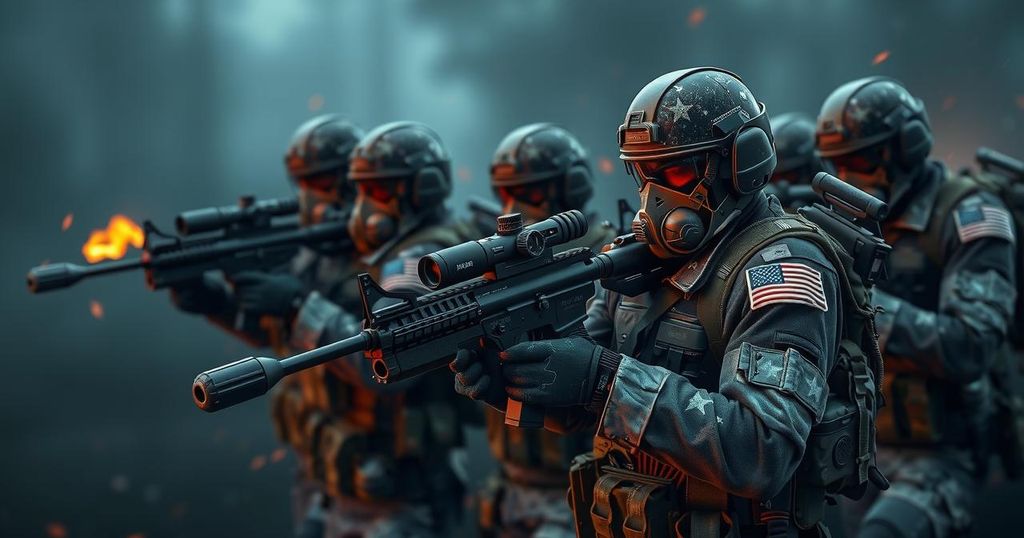The Wagner Group’s rebellion against the Russian military ended with its leader, Yevgeny Prigozhin, exiled to Belarus. Despite the unrest, experts suggest the group will continue to function in various regions, particularly Africa and the Middle East, as they navigate internal divisions and payment disputes. Not all fighters have opted to join Prigozhin, and many remain within Russia, consolidating the group’s uncertain future.
The Wagner Group’s armed rebellion against the Russian military rapidly concluded within 36 hours, culminating in the departure of its leader, Yevgeny Prigozhin, to Belarus. This turn of events leaves the group’s fate uncertain, as many experts posit that the mercenary organization will not disband despite its recent troubles. Wagner possesses a significant presence across Eastern Europe, Africa, and the Middle East, thus raising questions about its future operations and structure.
In the wake of the uprising, President Vladimir Putin suggested that Wagner fighters could join the Russian army, accompany Prigozhin to Belarus, or return home. Reports indicate that around 1,000 Wagner fighters have chosen to relocate to Belarus, although not all fighters have chosen this path. Some mercenaries remain stationed in Russian regions such as Luhansk and Donbass, while others are reported to be in Krasnodar, raising concerns about their loyalty and future intentions.
Though the Russian Ministry of Defense has not actively called for Wagner recruits to enlist, a worrying trend has emerged: many fighters appear reluctant to serve in the Russian military due to inadequate remuneration compared to private paramilitary groups. Analysts, including Dr. Joana de Deus Pereira, highlight financial motivations as a significant concern among Wagner fighters, as these groups often offer higher wages than state forces.
The group’s activities in Africa and the Middle East may reshape its identity. Analysts speculated that Wagner might undergo a rebranding to facilitate continued operations in regions where it has previously established a presence. Prigozhin’s role remains ambiguous; while he has reportedly avoided liquidation by Putin, the organization’s structure seems resilient enough to persist regardless of his involvement.
In summary, the Wagner Group’s future will likely involve a blending of its operational activities in foreign territories while grappling with internal dissent among its fighters who are considering alternative career paths amid a changing landscape in Russian paramilitary operations. As both the group and Prigozhin navigate these developments, the broader implications for Russia’s military structure and external engagements loom large.
The Wagner Group has gained notoriety as a significant paramilitary organization operating beyond Russian borders, with interests spanning various conflict zones, particularly in Africa and the Middle East. Its leader, Yevgeny Prigozhin, was a close ally of President Putin until recent conflicts led to a brief uprising that challenged Russian authority. The subsequent failure of the rebellion and Prigozhin’s exile has raised substantial questions about the organization’s future, revealing a complex interplay between mercenaries, state military forces, and the challenges that arise from mercenary pay disparities. Observers note the group’s intricate ties with international conflicts, especially in resource-rich countries where their operations have thrived. These elements combine to create an uncertain future for Wagner, as it grapples with internal divisions and the potential for reorganization under new leadership or frameworks.
In conclusion, while the Wagner Group has experienced significant turmoil following the unsuccessful rebellion against the Russian military, experts predict that it will continue to operate both in Belarus and abroad. Financial incentives remain a driving force for many fighters, who may seek alternative affiliations if the Russian military fails to meet their compensation needs. Ultimately, the resilience of the Wagner Group and its ability to adapt to changing geopolitical landscapes will be crucial in determining its future within the broader context of Russian paramilitary structures.
Original Source: telegrafi.com






